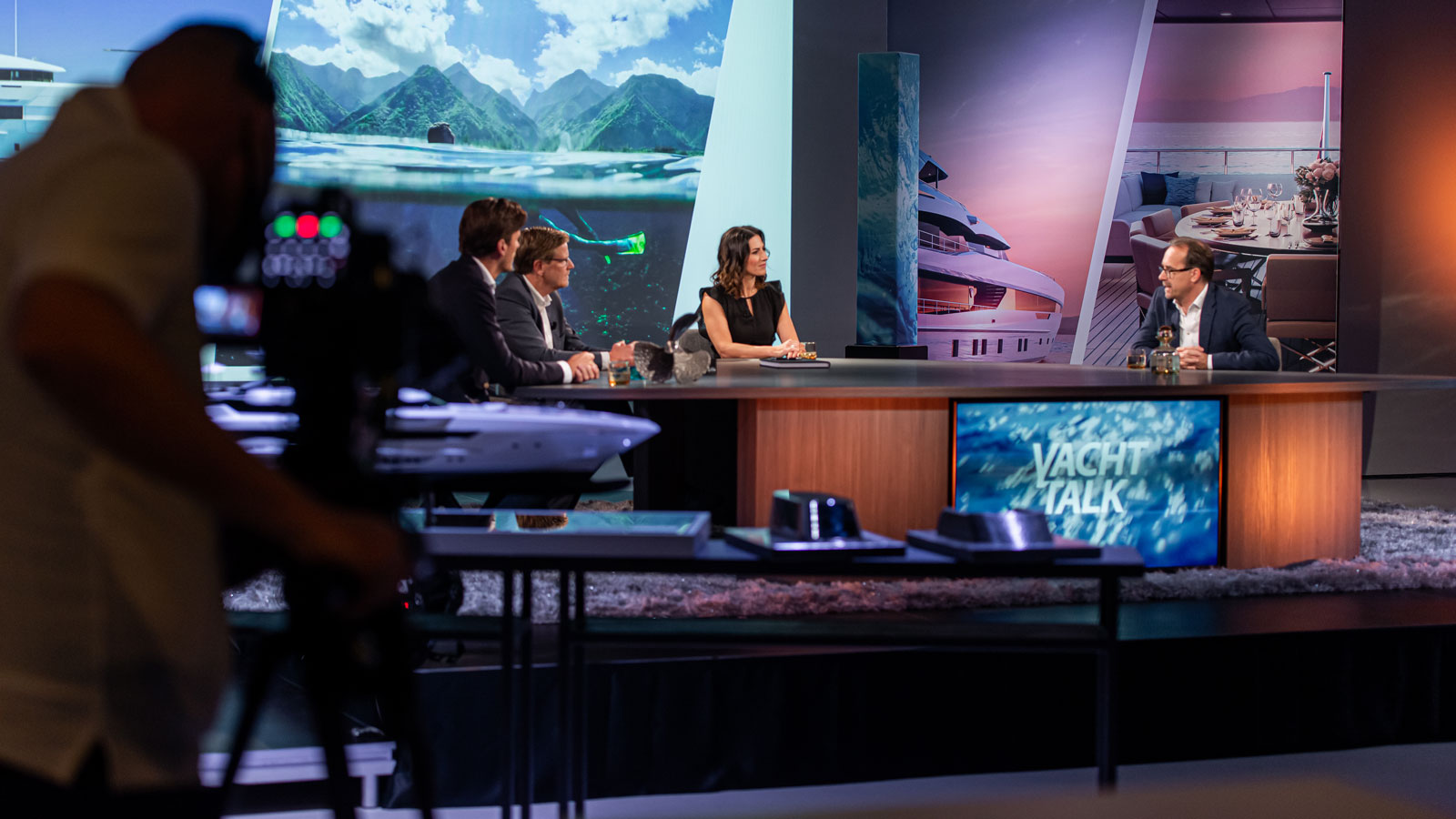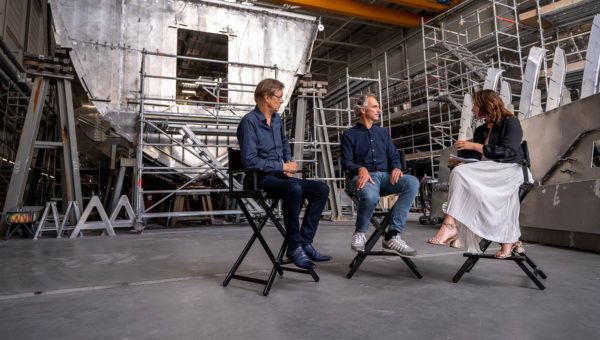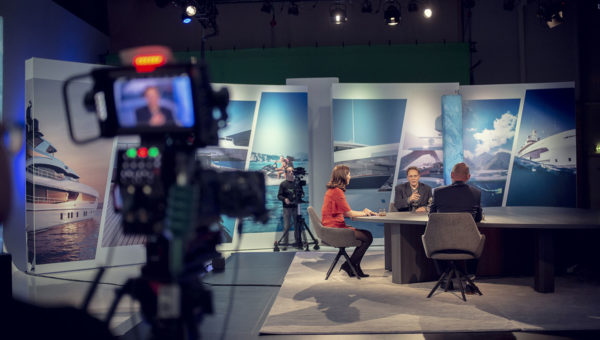YachtTalk episode 5: The future of yacht building
New technologies are the backbone of innovation, but how can they help to make yacht building more efficient and sustainable? Gathered together to discuss this topic were Erik Veurink, director of Brainport Industries Campus, Vincent Wegener, managing director of RAMLAB, and Rick van de Wetering, COO at Heesen Yachts.
The future of yacht building
Brainport Industries Campus launched a year ago with the aim of creating a setting in which high-tech manufacturing industries can come together and realise their potential by uniting educational and knowledge-based institutes, manufacturers and governments. Veurink refers to the environment as an ‘eco system’ that contains The Factory of the Future. This initiative runs specific innovation-based programmes that focus on key topics, such as robotics, sustainability and digitalisation.
Innovation is required to make traditional production processes both more efficient and sustainable. Software development, such as 3D technology, is another important element, but the two methods are not mutually exclusive, says Veurink. “Some people think it’s either traditional processes or new technology, but it’s important to know that there are good combinations available,” he says. For Veurink, the main challenge at present within high-tech manufacturing is the retainment of talent.
Vincent Wegener agrees: “If you don’t provide the latest tools, you won’t be able to attract the best talent.”
When it comes to building superyachts, the ideal is to integrate the craftsmanship on the shop floor with high-tech components as and when they develop, says Van de Wetering.
“Craftsmanship is labour intensive, but when teamed with new technology we are able to achieve a higher level of output.”
Rick van de Wetering
Also discussed was the global impact of Covid-19 on production. For Van de Wetering, the flexibility at the heart of Heesen is what helps to make it a highly efficient company, and this has gone a long way to managing production in 2020.
Veurink has a slightly bleaker outlook; he believes the pandemic has changed “everything”, because remote working is now the standard, which is difficult to achieve within manufacturing.
Wegener agrees, adding that the pandemic has highlighted the vulnerabilities within modern manufacturing methods, particularly when overseas suppliers are relied upon so heavily, and that 3D printing forms part of a new focus on local production processes.
Innovative production
Heesen’s main developments in recent years have included the use of exoskeletons, 3D printing, electrostatic painting and corrosion-resistant glue. “A lot of what we do comes down to man-hours and craftsmanship, but what we want to make sure of is that we are running as efficiently and safely as possible, so something like exoskeletons can really help with muscle fatigue when welding or fairing,” says Van de Wetering.
According to Wegener, 3D printing comes into its own when producing complex geometries and the production of composite moulds. RAMLAB is at the forefront of 3D welding, which can be used to make curved objects.
“Within yachting, 3D printing is particularly useful for the production of propellers and hulls.”
Vincent Wegener
Indeed, RAMLAB has already produced the world’s first 3D-printed and certified propeller, produced in just 10 days. In fact, the quick manufacturing of specific tools is another area of real interest.
“3D technology is definitely the future of propeller production,” says Van de Wetering. “Shipbuilding is quite a traditional industry, but it is certainly adapting to new techniques.”
Being able to print a specific part to order without compromising on quality is another advantage, says Wegener, along with a significant reduction in waste and cost, while Veurink believes 3D-printed plastics for yacht interiors is a real avenue of interest. “These are products for 3D printing, not mass production. You can print them as and when you need them,” he says.
Fast forward to 2050, and Van de Wetering believes the shipyard setup will see smaller workshops involving fewer employees, but only following a significant investment in new technologies.
“Software is the most important part of the future. Yachts should be Teslas on the water.”
Erik Veurink
But Wegener says digital collaboration that enables people to work together virtually, whether through VR or the internet, is both the future and our current reality – a scenario made necessary by Covid-19. “We will operate in one digitally connected system.”
Final question
When asked which company they most admire for their production processes, the panellists responded with the following thoughts:
Tesla was Wetering’s brand of interest, along with the car industry as a whole. “They produce their products in a highly efficient manner and constantly raise the bar. I take that as an example on how we can transform the yachting industry.”
Apple was Veurink’s company of note. “They don’t create what we need, they create needs. And that is what I love.”
Wegener spotlighted LA-based Relativity Space, which has set out to 3D print every part of its space rocket. “As a newcomer, they have been able to raise enough funding to set up a whole factory and are now printing every part of their rocket, and it’s a great example of where the innovation is going.”
Share
WE’LL KEEP YOU UP TO DATE
Sara Gioanola
PR & Press Office Manager Contact me via Whatsapp



